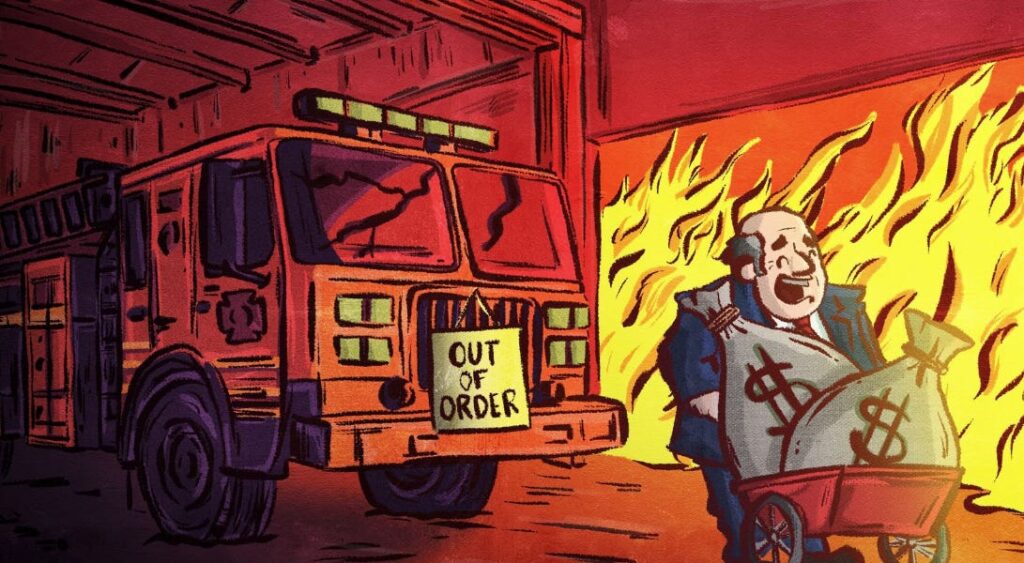Today’s piece is written by antitrust lawyer Basel Musharbash.
The Challenge of the Los Angeles Fire Department
According to Los Angeles Fire Department (LAFD) Chief Kristin Crowley, one significant factor contributing to the difficulty in managing the recent wildfires in Los Angeles was the fact that over half of the department’s fire trucks were out of commission. This has sparked controversy, as during the wildfire incidents in the Palisades and Eaton neighborhoods, more than 100 of LAFD’s fleet of 183 fire trucks were reportedly unavailable.
Budget Constraints and Rising Costs
The inability to keep fire trucks operational is often attributed to budget cuts, but a deeper issue lies in the rising costs and production delays of these vehicles. The price of fire trucks has surged dramatically in recent years, with pumper trucks now costing around $1 million and ladder trucks reaching up to $2 million, compared to prices of $300,000 to $900,000 in the mid-2010s. Delivery times have also ballooned from less than a year pre-pandemic to between 2 to 4.5 years currently, affecting all types of fire equipment.
Impact of Aging Fleet and Budgetary Constraints
This sharp increase in costs and delivery times has hindered the LAFD’s ability to retire and replace its aging fleet, many of which are beyond their service life. As these trucks grow older, they require more frequent and costly repairs, resulting in extended downtimes. Compounded by rising maintenance costs, the LAFD has faced budgetary restrictions that limit their capacity for hiring and retaining firefighters. Consequently, they found themselves battling some of the worst fires in a century while under-resourced and ill-equipped.
The Role of American Industrial Partners in Industry Consolidation
This article explores how prices have risen as a direct consequence of the consolidation of the fire truck industry by the private equity firm American Industrial Partners (AIP). Historically, the fire apparatus sector featured stable prices and sufficient production capacity due to numerous smaller manufacturers. However, AIP’s acquisition of several fire truck manufacturers, forming the conglomerate called the REV Group, shifted this balance. Initially promoting independent operations among the subsidiaries, AIP quickly began integrating them, leading to diminished competition.
Consequences for Fire Departments Nationwide
The issue of escalating fire truck costs isn’t unique to Los Angeles; fire departments across the nation are grappling with similar challenges. For example, Seattle, Houston, and Atlanta fire departments are all struggling to maintain and replace their fleets. Meanwhile, as demand climbs, production delays have lengthened, with some orders taking over four years to fulfill. For instance, the Evanston Fire Department resorted to purchasing a demo vehicle simply to secure a truck within a year and a half.
The Path Forward
The consolidation of the fire apparatus industry raises significant concerns about monopolistic practices. Although current antitrust laws could address this issue, they need to be enforced. State attorneys general and fire departments can pursue litigation to challenge the actions of REV Group and seek damages for the adverse effects on fire services. With appropriate action, it is possible to dismantle the monopolistic structure and ensure that the fire truck industry operates in the public’s best interest, preventing future delays and price hikes that could jeopardize lives and property during emergencies.


